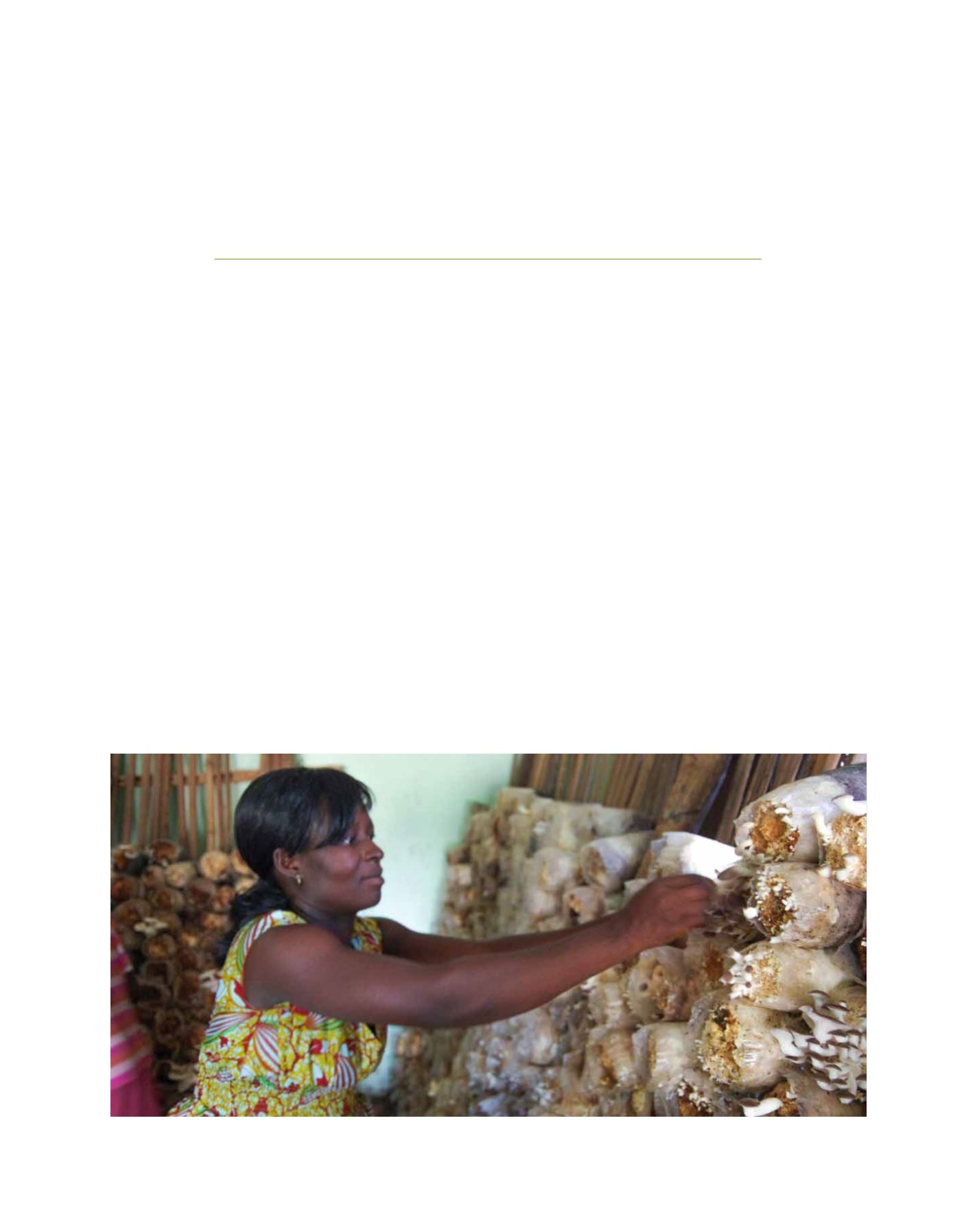

[
] 83
An African Development Bank
lens on financial empowerment of
women in Africa – aiming higher
Bernadette Dia Kamgnia and Jacqueline Odula Lyakurwa, African Development Bank
T
he battle for gender parity was internationally recog-
nized at the September 1995 Beijing declaration
1
which committed to the empowerment and advance-
ment of women. Building on the global momentum, the first
African Union Summit in 2001 adopted the principle of
gender parity, and slightly more than a year ago, the 25th
Ordinary Session of the Assembly of the African Union
declared 2015 the Year of Women’s Empowerment.
Notwithstanding global recognition of the urgency of gender
equality, a 2013 World Bank Enterprise Survey revealed that
female participation in (business) ownership averages over 25
per cent across the region, and that women’s businesses have a
significant observed low capitalization level compared to men’s,
irrespective of whether the business is new or existing.
2
These
findings were supported by a 2014 African Development Bank
(AfDB) evaluation which found that gender issues were often
minimally addressed in many of the bank’s projects.
3
The few
operations targeting women were structured as partial credit
guarantees.
4
Beyond these empirical studies, anecdotal evidence
suggests that women in Africa continue to experience pervasive
poverty and discrimination as a result of legal, cultural and
socioeconomic structures. This has resulted in women having
limited access to education, financial services, agricultural value
chains, and participation in policymaking processes.
In support of its regional member countries, AfDB has,
since its inception in 1964, launched programmes and poli-
cies to directly and indirectly address gender equality. The
bank ensures that its own internal structures and processes
show demonstrable concern over gender equality; and that its
projects and programmes are equally sensitive to gender issues.
5
Indirect programmes and projects have targeted food security
with the rationale that they increase rural household incomes
and welfare, and thereby empower women. These include those
in water management, tree planting, forestry, and improving
access to markets through the construction and maintenance of
rural roads. Direct interventions to enhance women’s access to
finance have mainly been in the area of microfinance targeting
The rehabilitation of a 2,000 cubic metre storage barn at Damango has enabled more stable incomes for women
Image: AfDB
G
ender
E
quality
and
W
omen
’
s
E
mpowerment
















